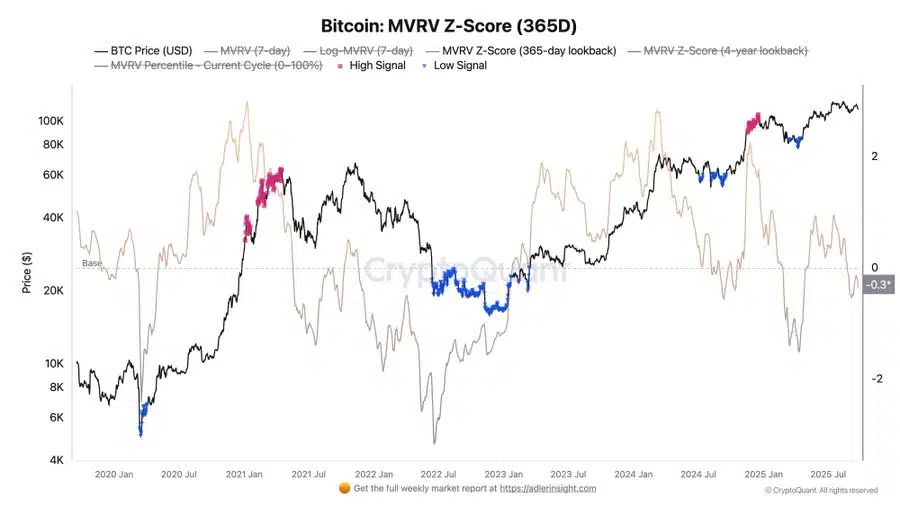Key Takeaways
Why is $2.5M a realistic target for Bitcoin by 2050?
By 2050, Bitcoin’s fixed 21M supply and modest global wealth allocation of just 5% could push valuations beyond $2.5M.
What role will institutions and governments play?
Institutional ETFs and potential government reserves could create massive demand, accelerating Bitcoin’s path to multi-trillion-dollar valuations.
Since its launch in 2009, Bitcoin [BTC] has consistently trended higher, despite periodic drawdowns.
The long-term chart highlights how each cycle has pushed BTC into new territory, with higher highs following every halving.
Today, with Bitcoin trading above $110K, the trajectory reflects over a decade of exponential growth fueled by scarcity, halving events, and growing adoption.
This structural uptrend forms the foundation of forecasts suggesting that by 2050, Bitcoin could reach valuations once thought unattainable, including the much-debated $2.5 million per coin target.

Source: TradingView
From scarcity to scale
Bitcoin’s supply mechanics are hardcoded. By 2050, over 99.99% of the total 21 million coins will be mined, effectively cementing its scarcity.
With no significant new supply entering circulation, price appreciation will be tied directly to demand.
At that point, Bitcoin’s valuation hinges on how much global wealth it captures. If BTC commands just 5% of projected global wealth (~$1,050T), its market cap would reach $52.5T, placing each coin near $2.5M.
At a 10% share, BTC could climb to $5M, and at 20%, a staggering $10M. These scenarios underscore how scarcity can drive scale in valuation.
Sustainable growth ahead for Bitcoin
On-chain data reinforces the long-term potential.
For instance, the MVRV Z-Score, a key metric comparing market value to realized value, recently dipped to -0.3, signaling that Bitcoin trades close to its “fair” valuation without signs of overheating.
Historically, low MVRV zones have coincided with long-term accumulation opportunities.
As cycles progress, MVRV tends to reset before launching into new growth phases, illustrating how on-chain fundamentals act as a pressure valve for sustainable expansion.
This ensures that BTC’s trajectory toward multi-million valuations is not purely speculative but grounded in structural market behavior.


Source: CryptoQuant
Institutions, governments could be the catalyst
Beyond on-chain data, macro forces and institutional involvement will shape Bitcoin’s 2050 path.
Asset managers like BlackRock have already moved to launch spot ETFs, accelerating accessibility for pension funds, sovereign wealth funds, and retirement accounts.
If institutions allocate even a fraction of their holdings into BTC, demand could eclipse supply many times over.
Additionally, governments exploring Bitcoin reserves as a hedge against fiat debasement could further legitimize its role as a global store of value.
With debt levels ballooning and inflationary risks persisting, Bitcoin stands poised to benefit as a scarce, non-sovereign asset.
Why $2.5M Bitcoin may be conservative, not ambitious
By 2050, Bitcoin’s capped supply will be fully realized, leaving demand as the sole driver of price.
With even modest wealth allocation, the $2.5M target appears feasible, and more aggressive adoption scenarios point to far higher valuations.
On-chain fundamentals such as the MVRV Z-Score demonstrate sustainability, while institutional adoption and macroeconomic headwinds create fertile ground for Bitcoin’s continued rise.
What once seemed improbable now fits within the framework of Bitcoin’s historical growth and future potential.
